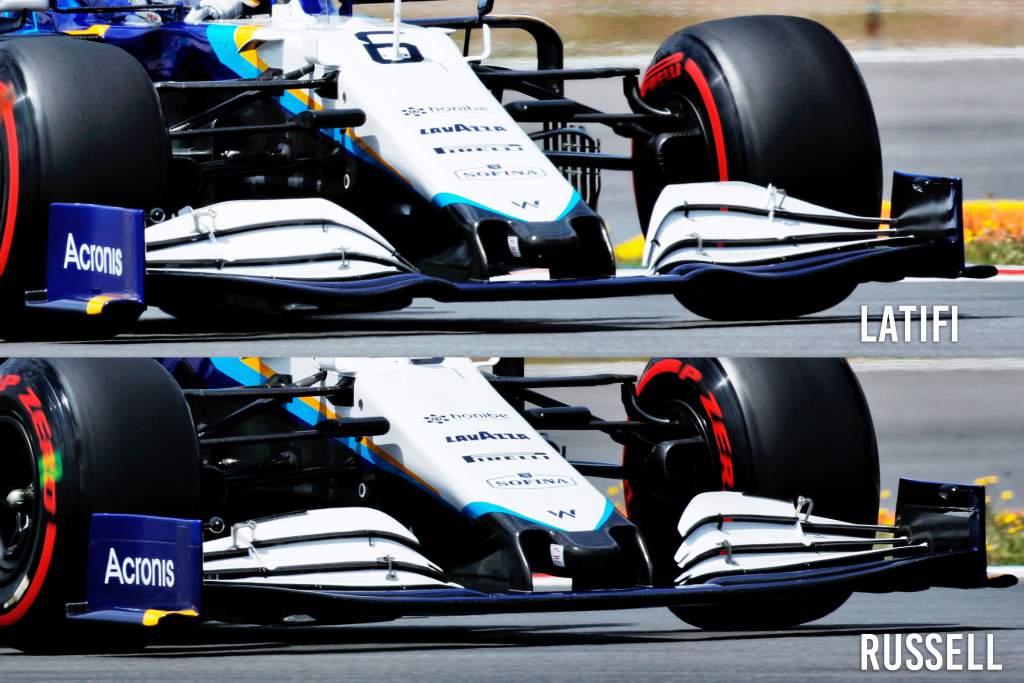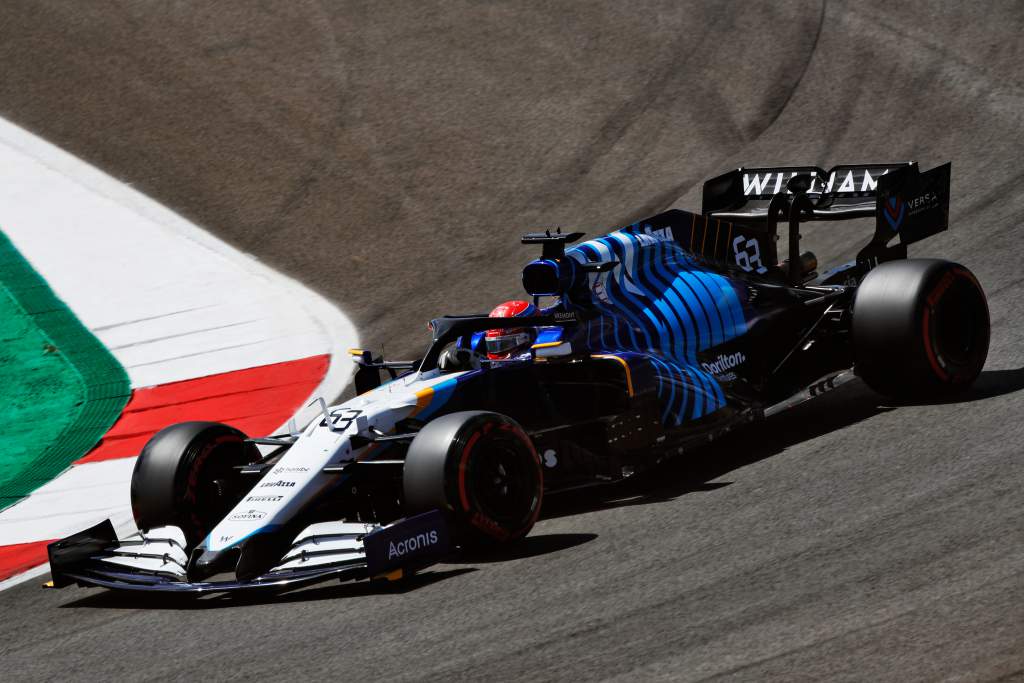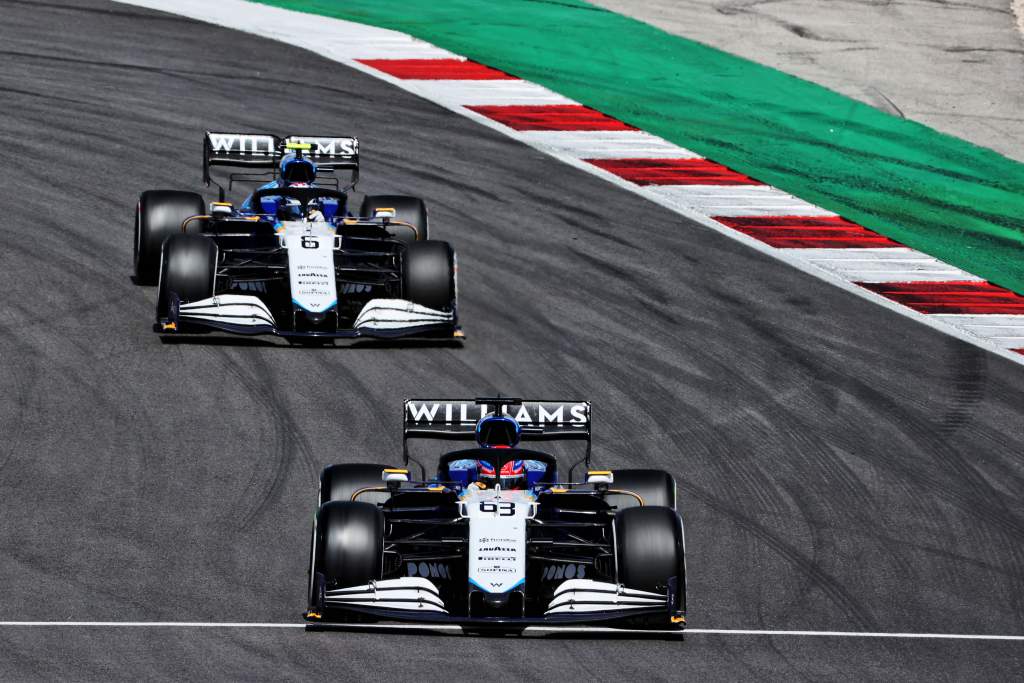Up Next

Williams opted to split running its 2021-specification Formula 1 front wing and last year’s version across its two cars during the Portuguese Grand Prix weekend.
Its drivers ran both front wings during Friday practice, but George Russell opted to continue with the 2020-specification for the rest of the weekend while Nicholas Latifi used the new spec.

Russell qualified 11th, just 0.057s off a Q3 place, and was hopeful of being able to challenge for a points finish.
But he said it was a “survival” race early on thanks to the gusty conditions that, at times, made the car undriveable. Russell faded to finish 16th, two places ahead of Latifi, who had similar problems.
Despite both drivers wrecking front wings in crashes during the Emilia Romagna Grand Prix last month, Williams did have adequate supplies of both specifications to allow its drivers a free choice.
Therefore this was about evaluating which is the more effective of two similar designs, with Russell explaining that the split is set to continue in the upcoming Spanish Grand Prix weekend.
“This new front wing versus last year’s front wing are very similar in performance,” said Russell when asked by The Race about the split in specification.
“Obviously, Nicholas and I both damaged some wings in Imola, but we’ve got plenty of spares and there’s no concerns on that front.
“We will reassess the two wings again in Barcelona and as they’re very close in performance, we thought [it was] better I stick with last year’s wing, Nicholas with the new wing.”

Portugal provided a prime example of exactly what Russell was describing earlier in the year about the focus on peaky downforce when the car was designed. As I said at the time, you shouldn’t rely on performing only at tracks where wind speeds are not a problem, especially as following another car will also lead to problems for cars with peaky downforce given how similar turbulence is to the wind effect.
We saw this in action in Portugal, with Russell close to reaching Q3 in qualifying while running alone but then dropping like a stone in traffic on top of the windy conditions on race day.
It was obviously unusual to see Williams splitting its spec to run the 2020 front wing on one car and the ’21 design on the other. While Russell says performance levels are similar, they are fairly different in how they are trying to manage the airflow. If its problems start with the front wing, then everything downstream will be affected.
The inner detail of the 2021 front wing is trying to use the junction of the different flow structure coming off the neutral FIA-defined centre section and the team’s own wing profile design outboard of that.

By using this lifted section on the front wing main plane and the flaps sweeping down on the inner ends, it is trying to set up a stronger Y250 vortex to improve the performance of the bargeboards. The Y250 vortex is so named because it is generated by the transition from that neutral central section, which extends 250mm either side of the car centreline.
The outboard end from year to year is very similar, so the loading across its span will not be that different. But the inboard change in philosophy could be causing Williams some concern because if that vortex isn’t robust enough, it can easily fall over when you get a crosswind or turbulence from another car.
For me, the 2020 version is fairly simple. It will be the more consistent and there will be very little crossflow generated by the changing profile but being simple means that it won’t produce the loads Williams is trying to achieve.
Trying to get more load with the 2021 design could easily induce crossflow, and if that is changing because of separation problems then it will lead to inconsistency.
Until you understand where your problems are coming from, it’s a waste of time, effort and money to blindly keep on developing.
So I think Williams is correct to keep back to backing these different assemblies until it gets the information required to allow it to take the next step.






